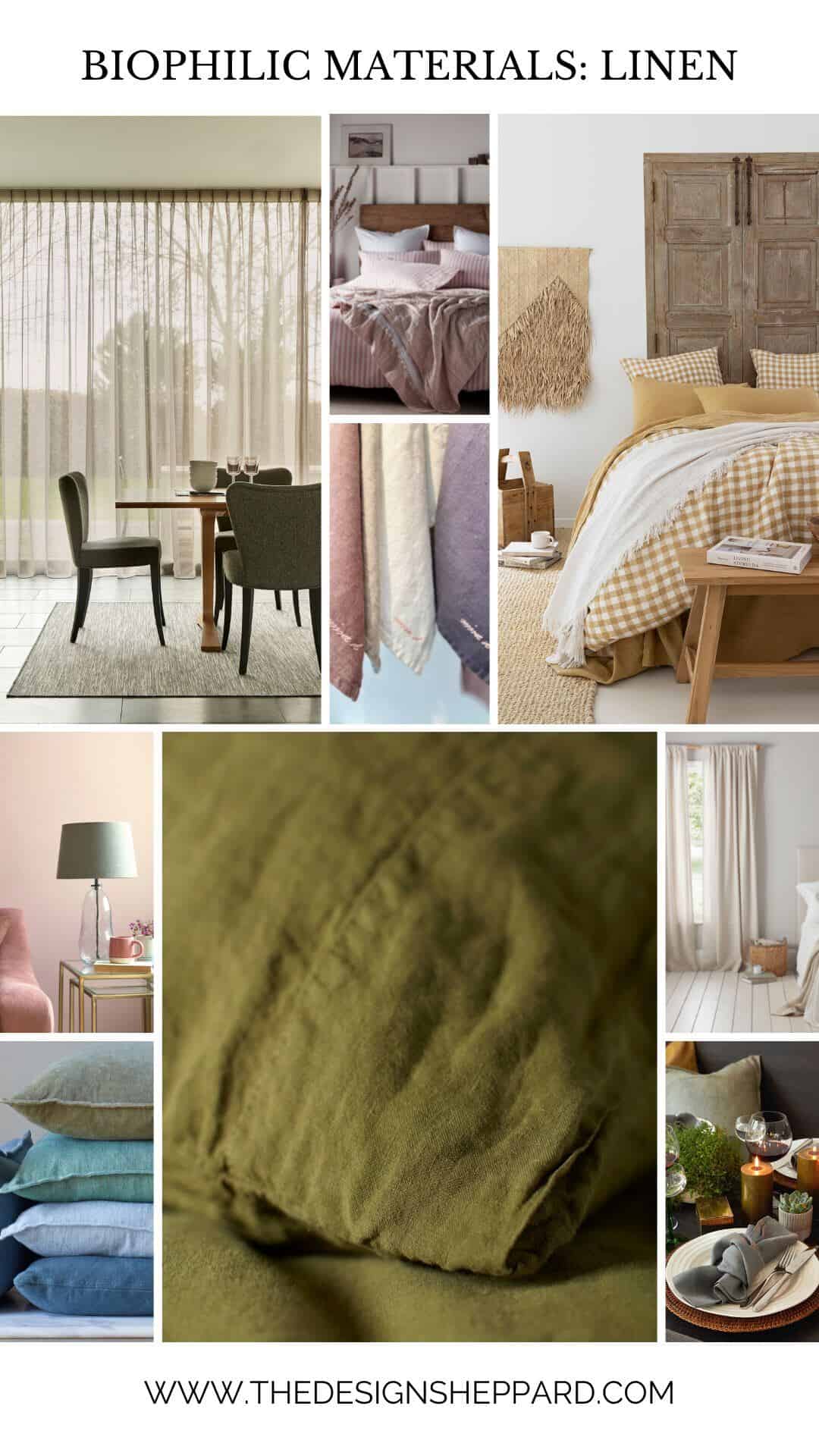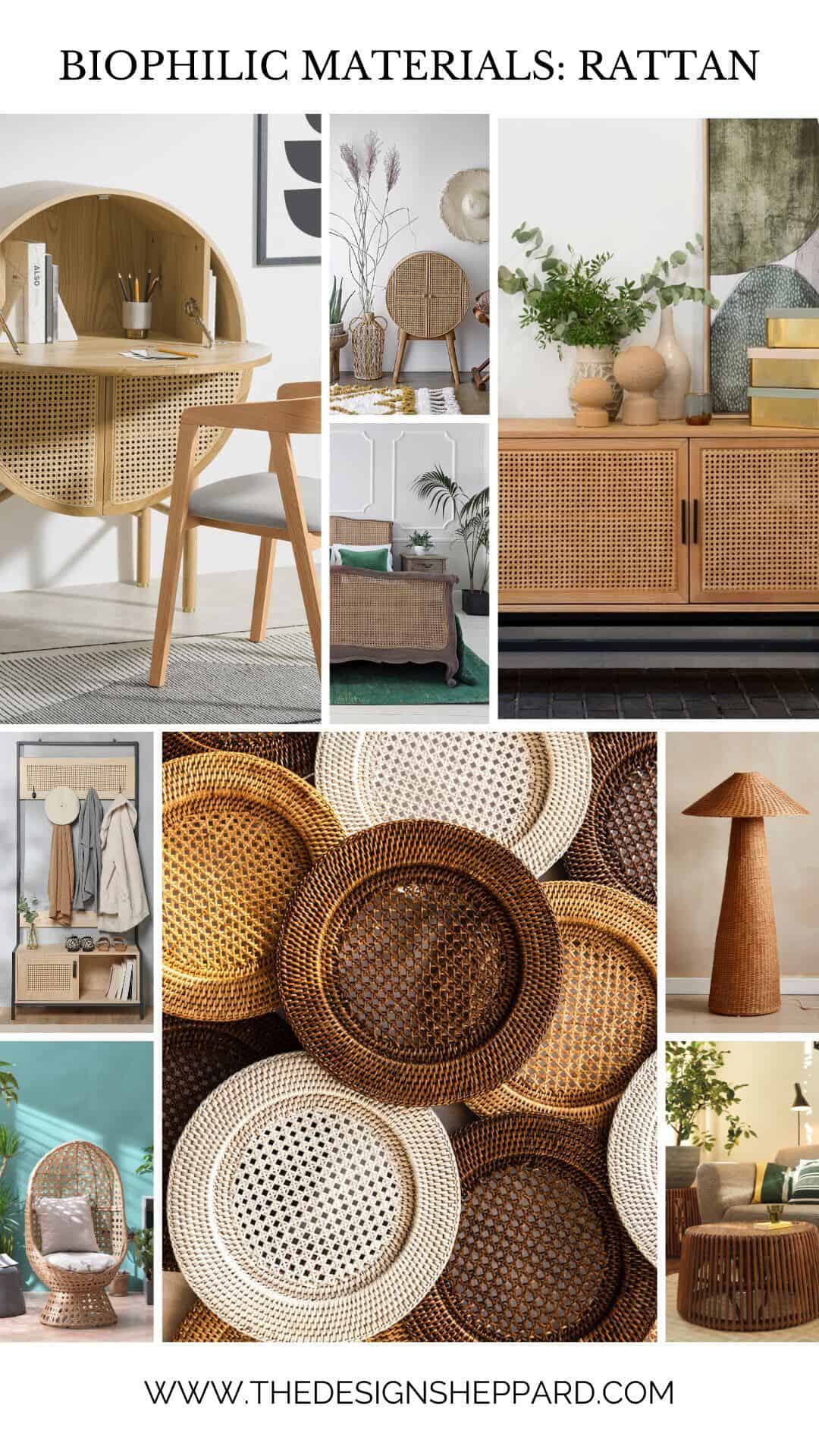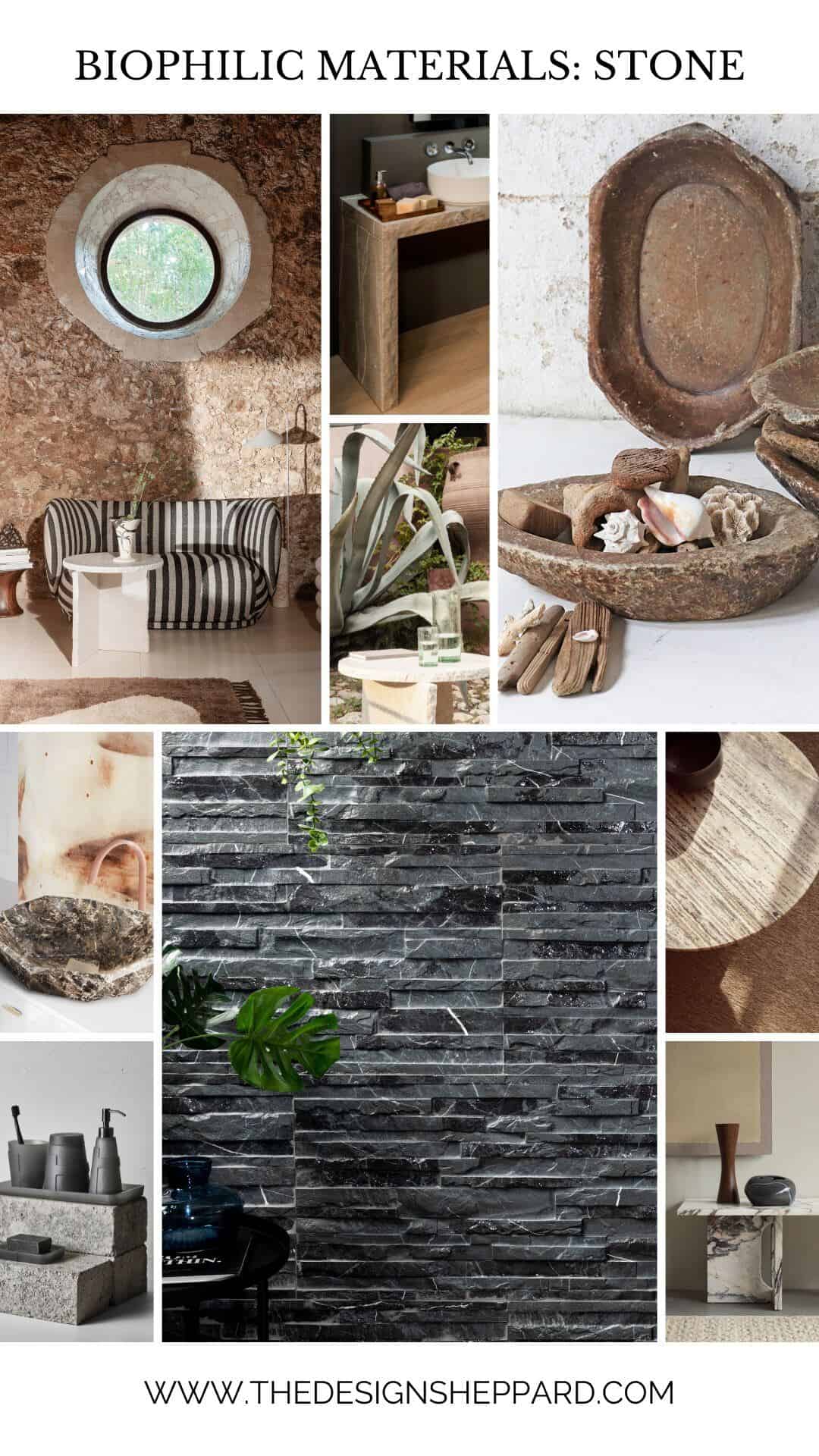
The Lobby of 1 Hotel Toronto provides inspiration for using biophilic design materials in our homes.
There are 14 Principles of Biophilic Design that we can use to create a home that brings nature into the built environment and benefits our mental and physical health and wellbeing. One of those principles is creating a material connection with nature. We can do this by using minimally processed natural materials and elements from nature that reflect the local ecology or geology to create a distinct sense of place.
By establishing a material connection with nature, we can create a home that feels richer, warmer and more authentic. We can also create a more sensory experience that draws not only on the visual connection to nature but one that is stimulating to our sense of touch.
In this post, I want to take a look at a selection of biophilic design materials that we can incorporate into our homes in order to harness the benefits that biophilic design has to offer.
Wood

The most obvious place to start is with wood. We all know that spending time outdoors in nature makes us feel better and creates positive physiological responses in the human body. We feel calmer, less stressed, less anxious, our pulse rate lowers and we generally feel better.
We can mimic this biophilic response to spending time in nature by bringing those materials, such as wood, into our homes. Studies have shown that an interior space with a wood ratio of 45% on the walls will boost our perception of comfort and lower our blood pressure.
It is best to try to use wood in its natural state for maximum benefit. We are drawn to the natural texture of wood and this is what we find to be one of its most attractive characteristics.
Visually we are also more attracted to wood in its natural state. We like to see the grain pattern, surface colour and features such as knots. The positive reaction we have to wood decreases when we these natural features are less perceptible.

Cork

Cork is one of my absolute favourite materials. I had the pleasure of learning all about it first-hand by visiting a cork oak forest in Portugal back in 2019. Cork is an absolutely remarkable material because it is so versatile. In recent years we have seen cork being used to create all sorts of home products from flooring and wallcoverings to furniture, storage, lighting, building facades, and even insulation.
What makes cork so special is how renewable it is. Cork can be harvested from a cork oak tree once it reaches 25 years of age with a trunk circumference of 70cm when measured 1.3m from the ground. After that, the harvest can be repeated every nine years as the tree needs this time to replenish its bark.
Cork trees store carbon in their bark and that carbon remains stored for the lifetime of the product that is made. This means that cork production is actually carbon positive as the process captures more carbon than it creates.
Cork production is also a circular process as no waste is created throughout the entire process and cork is completely recyclable.
There are many reasons that explain why cork is the perfect biophilic design material.
- It is extremely lightweight (one of the lightest solid substances there is)
- It can withstand a lot of pressure and bounces back easily so has great impact resistance
- It has a high resistance to penetration by water
- It is a great thermal insulator and has the same core temperature as human body temperature making it warm to the touch
- It is a good sound insulator and absorbs vibrations
- It is stable, tough, durable and hard-wearing.
And when used with minimal processing, resembling its natural state, it of course reminds us of tree bark and is extremely tactile.

Bamboo

Bamboo has grown in popularity recently but it is still a rather underrated biophilic design material. Bamboo is actually a type of fast-growing grass that is native to tropical, sub-tropical, and temperate climates and is most common in Asia and South America.
This means that it can withstand extreme changes in humidity and temperature and is therefore resistant to shrinking and swelling. As a material, it is strong, practical and durable. In fact, studies have shown that it is stronger than steel which makes it ideal for building furniture.
It usually reaches maturity between one and five years and can grow from 20 cm to 1 meter per day depending on the species. Once it reaches maturity it can be harvested and like cork, it doesn’t need to be replanted but regrows once it has been harvested.
Bamboo is an interesting choice of biophilic design material as it releases 35% more oxygen than other types of wood.
It is also very versatile and can be used to create flooring, furniture, lighting, fabric, storage, wall panels, home accessories, and even rugs.

Linen

Linen is a wonderful material that is made from the flax plant that grows especially well in Northern Europe. It has been used for centuries and is the world’s second most productive crop per hectare after hemp.
It outperforms cotton because it makes better use of the land through crop rotation and requires less water to grow. It also can be grown without the need for pesticides.
Linen is also biodegradable so it won’t clog up landfill or pollute the oceans as synthetic fibres do.
It is also a lovely material to have in your home as it is breathable and comfortable and this is why it is often used for bedding.

Rattan

Rattan is another great biophilic design material. Again it is completely natural as it is a climbing palm which develops as a vine in the jungle. It grows up tropical trees in the rainforest and can grow to be between 200 and 500 feet long. It is the quickest developing tropical wood that renews in only 5-7 years.
Once harvested the vines are usually cut into 13 feet lengths and left to dry in the sun. As a material, it is lightweight, durable, resilient and exceptionally sustainable.
Rattan also has air purifying properties as it converts CO2 into clean air.
Rattan has become an extremely popular interior trend in recent years due to the trend for natural materials. It can be used both indoors and outdoor so it is extremely versatile.

Stone

As biophilic design is all about bringing the outside in, it makes sense that stone features on our list of biophilic design materials.
As a natural material, it is the veining, striping and speckling that we tend to be drawn to along with the earth-toned colour palette.
Stone also offers a variation in temperature compared to more organic materials such as wood and cork. Stone is cold to the touch because it has high thermal conductivity so heat flows from us to the stone quickly making it feel cooler than wood for example which has a lower conductivity.
Stone is a great way to add a biophilic response to the bathroom which is traditionally very white, sterile and lacking in texture.

How to Use Biophilic Design Materials in Your Own Home
When thinking about how to use biophilic design materials in your own home, first take a hard look around at your surrounds outside. What kind of landscape is there? What is the local ecology and geology like? Is your local area surrounded by woodlands and forest? Is it near to sandy beaches or craggy mountains?
Try to bring elements of your local landscape into your home because connecting with local natural materials is a great way establish that material connection with nature and support that sense of place and of belonging.
Try to bring in lots of textures that resemble minimally processed natural materials. Think of how those textures make you feel and choose ones that you can’t resist running your fingers over. But choose a variety of contrasting textures and temperatures.
We want to create an experience that engages all of our senses, not just our vision.
The Added Advantage of Biophilic Design Materials
The added benefit of using biophilic design materials is of course the sustainability factor. All of these natural materials are sustainable, eco-friendly, renewable, recyclable and biodegradable making them much better, not only for people, but also for the planet.
So you can rest assured that while you are doing something to benefit your own health and wellbeing, you are also doing your bit to protect the planet.

